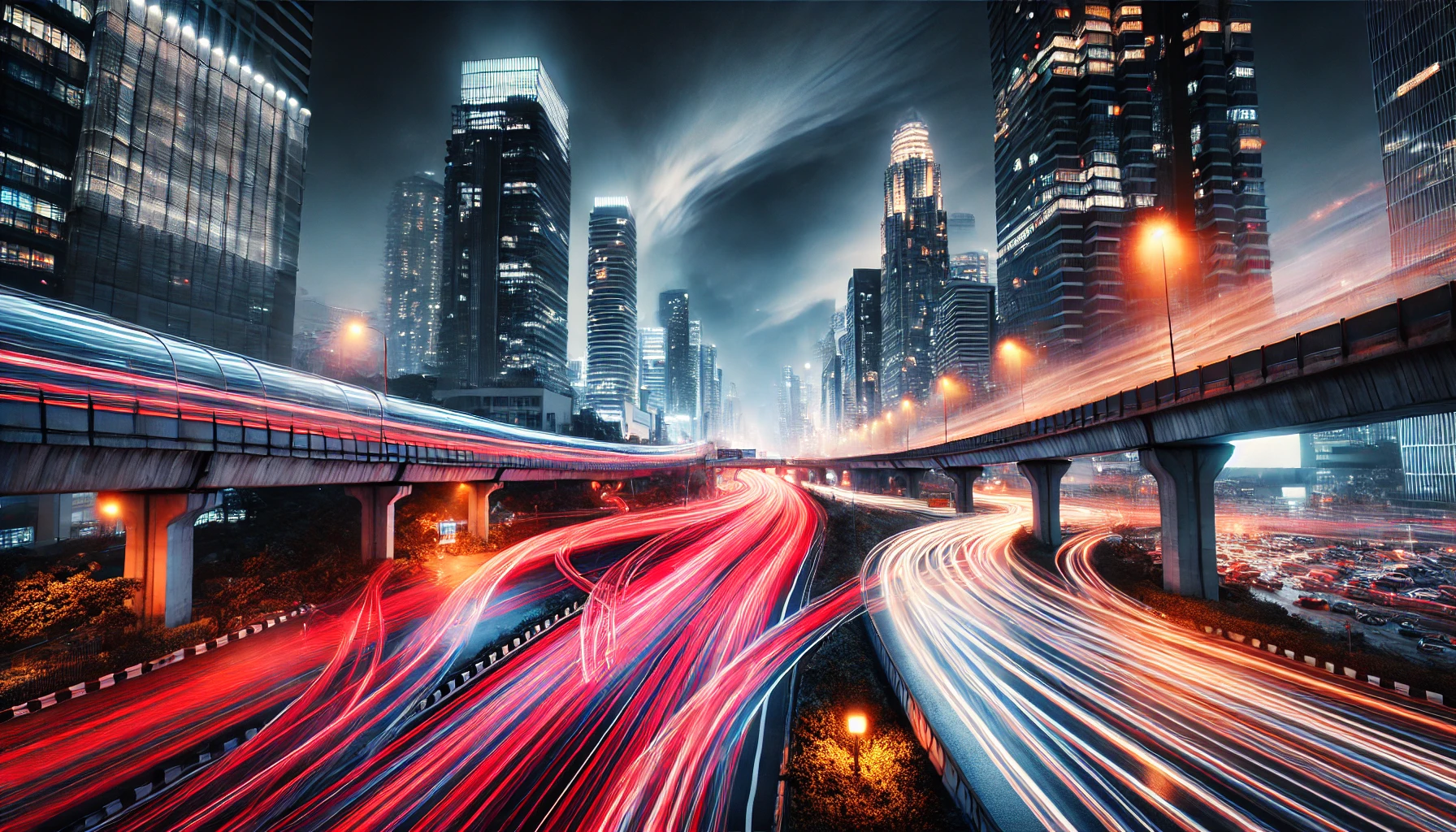Light trails photography captures the mesmerizing paths of moving lights, often created by vehicles, fireworks, or other illuminated objects. These dynamic streaks of light bring energy, movement, and creativity to your photos, turning everyday scenes into visually stunning masterpieces.
In this comprehensive guide, you’ll learn how to master light trails photography, including the equipment you need, settings to use, and creative techniques to achieve professional-quality results.
Why Shoot Light Trails Photography?
- Dynamic Visuals: Light trails add motion and energy to still photos.
- Artistic Creativity: Each photo is unique, as light trails vary with speed, direction, and environment.
- Storytelling: Light trails can depict the flow of time and movement in a way traditional photos can’t.
- Versatility: Perfect for urban scenes, highways, fireworks displays, and even light painting.
Essential Equipment for Light Trails Photography
While you can experiment with basic tools, having the right gear enhances your results:
1. Camera
- A DSLR or mirrorless camera with manual settings is ideal.
- Many smartphones with manual modes can also capture light trails effectively.
2. Lens
- Wide-angle lenses work well for capturing expansive scenes, such as highways or cityscapes.
- Standard lenses (e.g., 50mm) are great for isolating specific areas of light trails.
3. Tripod
- Stability is crucial for long exposures. Use a sturdy tripod to prevent camera shake.
4. Remote Shutter Release
- Minimizes vibrations when pressing the shutter button. A self-timer is a good alternative if you don’t have one.
5. Neutral Density (ND) Filters
- Useful for extending exposure times during daytime or well-lit scenes.
Camera Settings for Light Trails Photography
1. Shutter Speed
The length of the shutter speed determines the appearance of the light trails.
- 5–10 seconds: Shorter trails with less motion blur.
- 15–30 seconds: Longer, smoother trails with dramatic effects.
- Bulb Mode: Allows exposures longer than 30 seconds for maximum flexibility.
2. Aperture
Choose a mid-range aperture for sharpness and depth of field:
- f/8 to f/16: Ideal for sharp details and minimizing overexposure from bright lights.
3. ISO
Keep ISO low to reduce noise:
- ISO 100–200 is typically best.
4. Manual Focus
Autofocus may struggle in low light. Use manual focus to ensure sharpness, especially for stationary elements like buildings or landmarks.
Steps to Capture Stunning Light Trails
1. Choose the Right Location
Scout locations with a mix of light sources and static elements for contrast. Ideal spots include:
- Urban Areas: Bridges, highways, and city streets provide dynamic light patterns.
- Landmarks: Use iconic structures as a backdrop for light trails.
- Natural Settings: Rivers or mountains can create dramatic contrasts with man-made light trails.
2. Set Up Your Equipment
- Position your tripod on a stable surface.
- Frame your shot with a balance of static and dynamic elements.
3. Compose Thoughtfully
- Use leading lines to guide the viewer’s eye through the frame.
- Include stationary objects like bridges, buildings, or trees for added context and interest.
4. Experiment with Shutter Speed
- Start with 10–15 seconds and adjust based on the intensity of the light trails.
- For busy roads, shorter shutter speeds may suffice, while quieter scenes might need longer exposures.
5. Take Test Shots
- Check your initial shots to ensure proper exposure and composition. Adjust settings as needed.
Creative Techniques for Light Trails
1. Layering Trails
Capture multiple exposures of light trails and stack them in post-processing for a more dramatic effect.
2. Light Painting
Use handheld light sources, such as flashlights or sparklers, to draw shapes or patterns within the frame.
3. Reflections
Shoot near water or reflective surfaces to create a symmetrical effect with light trails.
4. Starbursts
Use a smaller aperture (e.g., f/16 or f/22) to turn streetlights and other bright points into starbursts, adding extra flair to the image.
5. Panning with Motion
Instead of keeping the camera stationary, pan along with a moving light source to create dynamic streaks.
Post-Processing Tips for Light Trails
1. Adjust Exposure and Contrast
- Brighten shadows and fine-tune highlights to balance the image.
- Increase contrast to make the light trails pop against darker backgrounds.
2. Reduce Noise
- Long exposures can introduce noise. Use noise reduction tools in Lightroom or Photoshop for cleaner results.
3. Enhance Colors
- Boost the vibrance and saturation of the light trails to emphasize their energy and motion.
4. Crop for Better Composition
- Remove distractions and focus on the most compelling parts of the image.
5. Stacking for Complex Trails
- Combine multiple exposures to create intricate light patterns while maintaining control over brightness.
Common Challenges and How to Solve Them
1. Overexposed Trails
- Solution: Reduce shutter speed or use an ND filter to limit light entering the lens.
2. Unwanted Vibrations
- Solution: Ensure your tripod is stable and use a remote shutter release.
3. Flat or Dull Light Trails
- Solution: Adjust contrast and saturation in post-processing to enhance the vibrancy.
4. Blurry Static Elements
- Solution: Use manual focus to ensure stationary objects remain sharp.
Inspiring Ideas for Light Trails Photography
1. Highway Overpasses
Capture a web of intersecting light trails from vehicles.
2. City Skylines
Combine light trails with urban architecture for a modern aesthetic.
3. Night Markets
Photograph vibrant stalls with trails of people moving through the scene.
4. Airplanes and Boats
Track the motion of airplanes taking off or boats cruising through harbors.
5. Fireworks Displays
Capture the burst and fall of fireworks for a festive light trail effect.
Final Thoughts
Light trails photography is an exciting and creative way to bring movement and energy into your images. By mastering the right equipment, settings, and techniques, you can transform ordinary scenes into dynamic and visually stunning works of art.
Experiment with different environments, light sources, and compositions to develop your unique style. Whether you’re shooting bustling city streets, quiet country roads, or festive celebrations, light trails are your gateway to a world of photographic possibilities.
